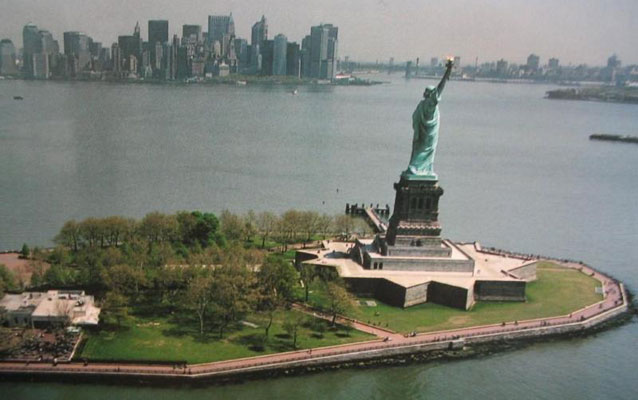Last updated: December 18, 2018
Place
Fort Wood (Liberty Island) and Fort Gibson (Ellis Island)

NPS photo
Two enduring landmarks of New York City symbolize American liberty and the hope of generations of immigrants: Ellis Island and the Statue of Liberty.
But before the Statue of Liberty was assembled there in 1876, the island was a strategic position from which to defend New York from enemy assault. A massive stone fort was constructed on the island in 1807, and was renamed Fort Wood in honor of an American Army engineer who died in the seige of Fort Erie on the Candian front of the War of 1812. The remnants of the 11-pointed fort that protected New York from British invasion are still visible today as the base on which the Statue of Liberty stands.
Nearby Ellis Island, famous today as an immigrant processing station, was also part of New York's harbor defense system during the War of 1812. A fort built in 1795 was named Fort Gibson in honor of Colonel James Gibson, another fallen American soldier of the seige of Fort Erie. Only a portion of the foundation of the fort remains today.
